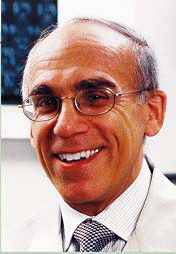Even though some patients need multiple surgeries for polyps, most studies looking at patient satisfaction show it’s worth it.
Explore This Issue
July 2007But some patients who return may have additional sinus troubles. There could be scar tissue from previous surgeries, residual infected tissue (which can cause recurrent polyps), or tissue that didn’t heal properly. In addition, primary surgery may have caused the middle turbinate to scar or even lateralize blocking the sinus opening, for example.
Most of these issues are common reasons for post-sinus surgery trouble even in non-polyp patients. The middle turbinate can be a tricky issue, however.
Dealing with the Middle Turbinate
Historically, surgeons would remove the middle turbinate because it could block the sinus opening. A complication of sinus surgery, in general, is that the middle turbinate lateralizes to a position where it scars or blocks airflow into the frontal sinus, maxillary sinus, or the anterior ethmoids. Even in the best conditions, it can happen, said Dr. Friedman.
Although some surgeons opt to resect the middle turbinate to avoid this, most sinus experts now opt to preserve the natural anatomy. If it scars, the problem would be evident in an early postoperative visit and at this point an early revision could be done. Some revisions are required as early as one or two months after surgery, he said.
Revision Technically More Difficult than Primary Surgery
When it comes to revision surgery in the non-polyp patient, a big challenge is working with anatomy that has been changed. If a patient has undergone sinus surgery, and if the first surgeon did an incomplete job in terms of removing tissue, then the second surgical procedure is a completion of the first surgery, Dr. Friedman said.
Revision surgery is more difficult because the anatomy has been distorted, it is technically challenging, and the risk of complications is higher.
For surgeons doing primary procedures, approaching the sinus with the intent to treat all the affected areas is important, he said. Some surgeons may be comfortable with operating on just the ethmoid and maxillary sinuses, and aren’t comfortable with the frontal or sphenoid sinuses, he continued.
If a patient needs more extensive surgery, refer him or her to a more experienced surgeon. Doing only part of it can be worse than doing nothing, Dr. Friedman said.
Dr. Sindwani agreed that revisions can be fraught with difficulties. Even if you did do the primary surgery, there can be infection, scarring, and inflammation, making it easy to become disoriented during RESS. The anatomic landmarks that usually guide a surgeon through the sinuses are often distorted or may be absent altogether, he said.

Leave a Reply